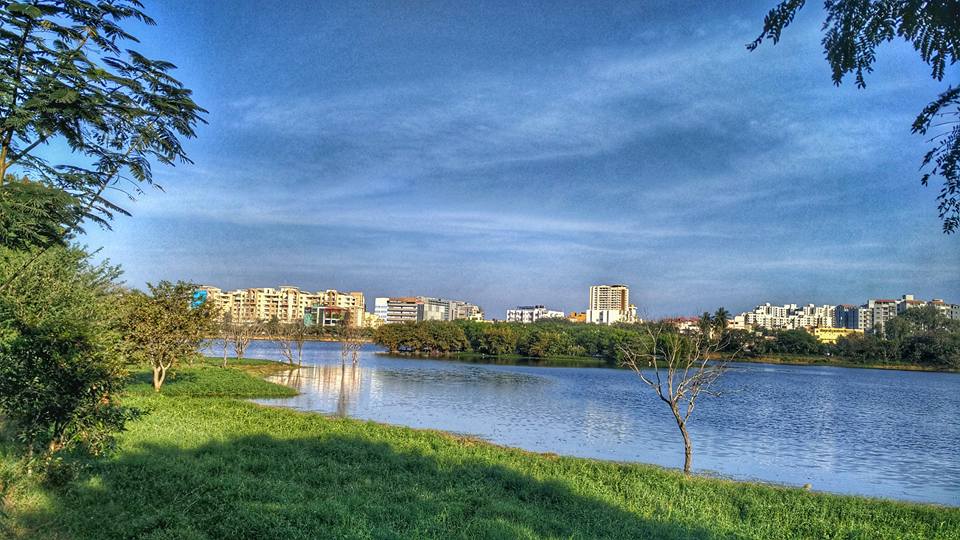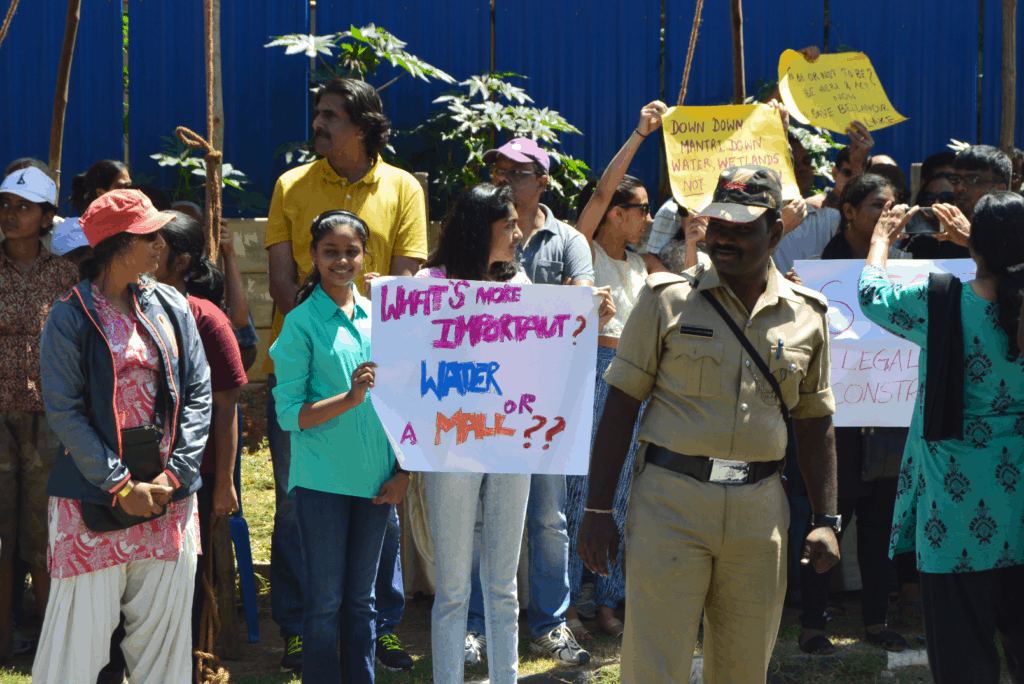Who governs the lakes of our cities? Or should that question be: who should be governing our lakes?
Most of us believe it should be the government. A lot of us assume that places like lakes are, by default, to be taken care of (preserved, maintained and conserved) by the government. And we are not wrong there. It is the government who does that, by default. But what we often don’t realise is that that reality can be changed, and the community that inhabits the areas around these lakes have a big role to play.
At the same time, a lot of us would also say: well, we knew that! We have read of social movements like the Chipko movement. We already know that community actions can be a major game-changer.
But that’s not all.
A recent study by Dr Sanchayan Nath and Dr Frank van Laerhoven on some Bengaluru lakes, titled ‘Using power, mental model, and learning to analyze the evolution of water governance in Bangalore’, shows us that it’s the combination of the government and the community that works the best, especially when it comes to conserving those water bodies that are being deteriorated by the rapid urbanisation that we are part of.
The paper theorises the complex interactions between the state and non-state actors that ultimately lead to transition of governance of lakes from the state to a partnership between the state and the community. For this, they refer to three socio-political elements that silently work amongst and within our interactions: power, learning and mental models.

Let’s try to understand these interactions with the help of a fictional story.
A lake near my house is dying a slow death. Over the years, I have seen it lose its beauty and freshness. I have seen my locality turn the lake’s blue water into a dumping ground for plastic waste; its lake bed being encroached upon to accommodate the growing population in my locality. I see it gasping for breath a little harder with every passing day.
One day, I hear about a local NGO that has been talking to people of my locality about taking initiative to help the lake heal. They say the public agencies won’t do anything that would bring about real change because those agencies never work in the interest of the public. That is what the authors call an individual mental model (IMM). Let’s call it IMM1.
(An individual mental model is held by an individual or a specific entity, and is not shared by the larger groups or parts of the population, i.e it’s a mental model that may deviate from the shared notions of the matter in question.)
But I do nothing because I think it’s the government’s job to save it. I talk about this to some of my friends and fellow locals, to find out that they are not buying into the NGO’s stance either. This is called a shared mental model (SMM). Let’s call it SMM1.
At the same time, there are some people who disagree and believe that the community itself can carry out protective measures without the help of public agencies. This is, in a way, similar to IMM1. Therefore, we’ll call it IMM1a.
A few days later I hear the NGO has been able to organise enough people to carry out a lake cleaning drive. It is inspiring to see a bunch of volunteers clean the lake themselves without any help from the government. I talk about it to my friends and I find out that they have found it impressive as well.
The idea that perhaps we should do something similar, starts coming up every time us locals meet, and eventually, we start scheduling meetings to plan our own cleaning drive. Here, we use the relational power of our community, and eventually, we are able to organise a cleaning drive of our own. This is what authors call an issue-network: a network of people that come together to solve a common issue. A city has various issue-networks working parallelly around different issues.
Meanwhile, we get to know that a similar community movement was able to knock on the doors of the High Court and were able to legalise their demands to save public spaces from the private players the government was in partnership with.
Soon, we hear from that NGO again. But this time, they ask us if we would join them to start a collective that would be made up of various non-state actors — civil society organisations, NGOs and communities.
They propose that we discuss and debate about our demands, and come up with the next steps to be taken to protect our lakes and other public spaces because in the end that’s the common goal all of us share. We, among our community, decide to take part in the discussions. The High Court’s ruling had supplied our community with the dispositional power as a collective that we needed.
During the discussions, we find that the views that we as various non-state actors hold, are still in conflict: some think that the government is good for nothing whereas some others believe that real changes at large scale can only be brought about with the help of the government. Others still think that it doesn’t matter what the government can or cannot do, the community itself can bring about real changes (SMM2).
After several rounds of discussions, we find a middle ground and are able to see as a collective, that a combination of state and non-state actors is the way to go. This becomes another shared mental model. We will call it SMM3.
Finally, we call for government action, with our collective in partnership with it. But we are shot down. We decide to go to the court and the court rules in our favour. Here, we use the structural power vested in the judiciary by the Constitution, to back our demands.
At each of those steps, what leads to the alterations in mental models is the learning that comes with exercising different kinds of powers: relational, dispositional and structural. And each loop of learning leads to the next: single, double and finally the triple-learning loop that leads to real-life transition in governance of water bodies: from “governance by unitary state” to “governance by partnership”.
| IMM1 | Public agencies did not work in the interest of the public |
| IMM1a | Communities can successfully organize themselves and undertake lake conservation activities on their own without active involvement of public agencies |
| SMM1 | Non-governmental organisations had no role to play in lake governance |
| SMM2 | Communities can successfully organize themselves and undertake lake conservation activities on their own without active involvement of public agencies |
| SMM3 | Amalgamation of first and second mental models to capture a wider spectrum of people with the two conflicting mental models–both public agencies, as well as communities, need to work together for successful rejuvenation and conservation of the city’s lakes |
Eventually, various lake-level issue networks (networks connected with different lakes) come together to form issue networks at the city-level for common causes.
Bengaluru’s story
The paper argues that the locus of decision making is important in bringing about real changes, as the case of governance of some lakes in Bengaluru has shown. And that these changes must be accompanied by changes in societal mental models, which in turn are brought about by learning processes.
In the early 1980s, state actors were forced to take the deterioration of lakes of Bengaluru into cognisance. The culprit, of course, was rapid urbanisation. Non-state actors like NGOs and civil societies soon began to realise that the government’s efforts were half-hearted and incapable of bringing about real change.
They organised and carried out cleaning drives of some lakes. But the results were still small-scale and hyper-localised. A landmark judgement by the Supreme Court in 2010 strengthened their dispositional power and they started to organise non-state actors more widely and vigorously.
This led to the civil society actors asserting their collective relational powers in their interactions with the state actors — petition signing, tree planting efforts, etc. Other actors like academia and media got involved. Academic actors began to join these issue-networks, investigating the issues and making the findings easily available; the media reported widely on these issues.

Experimental rejuvenation of some lakes in 2011 was backed by the Karnataka High Court’s directives to the government– thus, providing legal backing to lake governance by local communities.
In May 2011 a Memorandum of Understanding was signed between the city municipal corporation Bruhat Bengaluru Mahanagara Palike (BBMP) and the citizen-group Puttenahalli Neighbourhood Lake improvement Trust (PNLIT) for co-governance of Puttenahalli Lake. Similarly, the lake-group associated with Kaikondarahalli Lake formed a trust called MAPSAS registered in the second half of 2011, followed by the signing of a MoU with BBMP for the joint management and governance of the lake.
Some non-state actors like activists and academics were involved in various issue-networks across the city. So they brought all the issue-networks under a single umbrella. This led to the formation of a city-wide issue-network under the aegis of the ‘Save Bangalore Lakes’ group.
“In other words, mechanisms of lake governance in the city had transformed and public-community partnerships became the dominant mode of lake governance in Bangalore,” Dr Sanchayan and Dr Frank conclude in their paper.
This governance-by-partnership of water bodies model has been adopted by both developed and developing countries. We are yet to figure out why it works in some cases but fails to bring about change in others. Even so, fortunately, some lakes in Bengaluru have seen the better side of this state-community partnership.
This paper doesn’t only bring us a better understanding of how such negotiations happen between state and non-state actors and one non-state actor with another, it also brings us hope. It tells us the story of what communities can do to protect the ecosystems they are a part of. It tells us a story of humanity.
[The author would like to thank Dr Sanchayan Nath for his inputs.]
The authors should revisit now PNLIT,MAPSAS AND SBL and investigate why all these three failed to sustain lake rejuvenation in the city.Without such a follow up study no policy conclusions should be drawn.
There will always be ups and downs in an urban lake. Puttenahalli went through a slump in 2020 with sewage influx. BBMP and PNLIT persisted with the Sewerage Board till it was sorted out in early 2021. It required replacing the underground drain with a bigger pipe. Puttenahalli is once again a pristine lake. This is another instance to show why neighbourhood participation is vital to lake management – as mentioned in this research paper.